November 8, 2018
Top 10 Doctrines Every Law Student Should Know
Top 10 Doctrines Every Law Student Should Know
1.Doctrine Of Basic Structure
The ‘Doctrine of Basic Structure’ was propounded by the Indian Judiciary in Kesavananda Bharati v. State Of Kerala to put a limitation on the amending powers of the Parliament so that the ‘basic structure of the constitution of India’ cannot be amended in exercise of its ‘constituent power’ under the Constitution. In this case court said ” the basic structure may be said to consist of the following features:”
-
Supremacy of the constitution
-
Republican and Democracy form of Government
-
Secular character of the constitution
-
Separation of powers between the Legislature, the executive,and the judiciary
-
Federal character of the constitution.
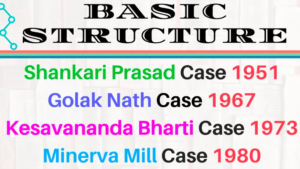
The power to amend the Constitution of India is in the hands of the Parliament under Article 368 of the Constitution, but parliament can not destroy the basic structure of The Constitution while using this power.
2. Doctrine Of Judicial Review
Judicial review is the authority of the courts to declare laws or actions of government officials unconstitutional. It is the ability of the Court to interpret laws and executive actions in the light of the Constitution. If such law is found to be violative to the provisions of The Constitution of India, or the actions taken are beyond the powers granted by the Constitution, it is liable to struck down by the Court as void under Article 32 and 226 of the Constitution of India.
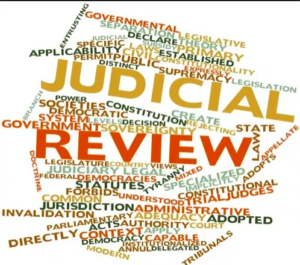
3. Doctrine Of Pith And Substance
According to the doctrine of Pith and Substance, where the question arises of determining whether a particular law relates to a particular subject matter mentioned in one List or another, the court looks to the substance of the matter. If the substance falls within Union List, then the incidental encroachment by the law on the State List does not make it invalid.
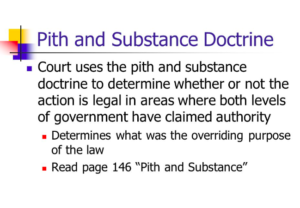
4. Doctrine Of Colourable Legislation
The doctrine of colourable legislation is based upon the maxim that what cannot be done directly, cannot be done indirectly too. It becomes applicable when a legislature seeks to do something in an indirect manner what it cannot do directly. It refers to the question of competence of the legislature concerned to enact a particular law. The Doctrine was applied by the Supreme Court in the case of State of Bihar v. Kameshwar Singh. In this case the court held that The Bihar Land Reforms Act was invalid.
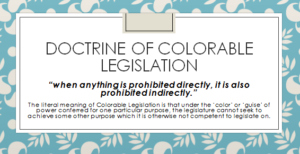
5. Doctrine Of Natural Justice
The Doctrine of Natural Justice consist two basic principle:
-
Nemo Judex In Causa Sua it means that a man should not be the judge in his own cause. it is also known as rule against bias
-
Audi Alteram Partem it means hear the other side. It says no person shall be condemned without being heard.
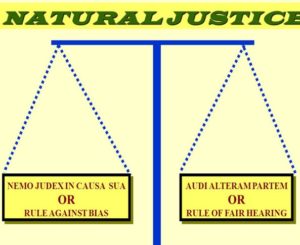
6. Doctrine Of Utmost Good Faith
The Doctrine of Utmost good faith is applicable in contracts. It says the parties to a contract will deal with each other honestly, fairly, and in good faith, to not destroy the right of the other party or parties to receive the benefits of the contract. It put obligations on the parties to disclose all material facts and should not make any representation. The duty to disclosure of facts is on both sides.

7. Doctrine Of Severability
The doctrine of severability is a guardian of fundamental rights incorporated under Part III of The Constitution of India. If any of the provisions in an act or statue is contrary to fundamental rights then only that provision would consider being void and it is not the whole act that becomes void.
In case of A.K. Gopalan v. State of Madras, A.I.R. 1950 S.c. 27 where section 14 of prevention detention act was found out to be in violation of Article 14 of the constitution of India. It was held by the Supreme court of India that it is section 14 of the act which is to be struck down not the act as a whole.
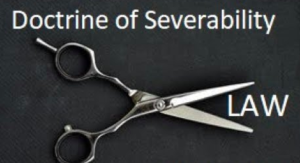
8. Doctrine Of Estoppel
The doctrine of estoppel prohibits a person from denying the truth of some statement previously made by himself. According to this doctrine a person shall not be allowed to say one thing at one time and the opposite of it at another time. He cannot blow both hot and cold at the same time. The doctrine of estoppel in India is a rule of evidence incorporated under Section 115 of The Indian Evidence Act, 1872.
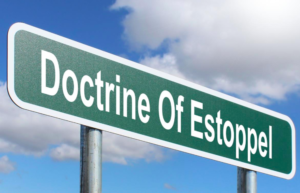
9. Doctrine Of Privity
The Doctrine of privity provides that a contract cannot confer rights or impose obligations upon any person who is not a party to the contract. It says that only parties to contracts shall be able to sue to enforce their rights or claim damages as such. In simple words a third party neither acquires a right nor any liabilities under such contract.

10. Doctrine Of Res Judicata
The doctrine means “one suit and one decision is enough for any single dispute”. It is governed by the Section 11 of Civil Procedure Code, 1908 which provides that once a matter is finally decided by a competent court, no party can be permitted to reopen it in a subsequent litigation. It bars the trial of suit on an issue in which the matter directly and substantially in issue has already been adjudicated upon in previous suit.

